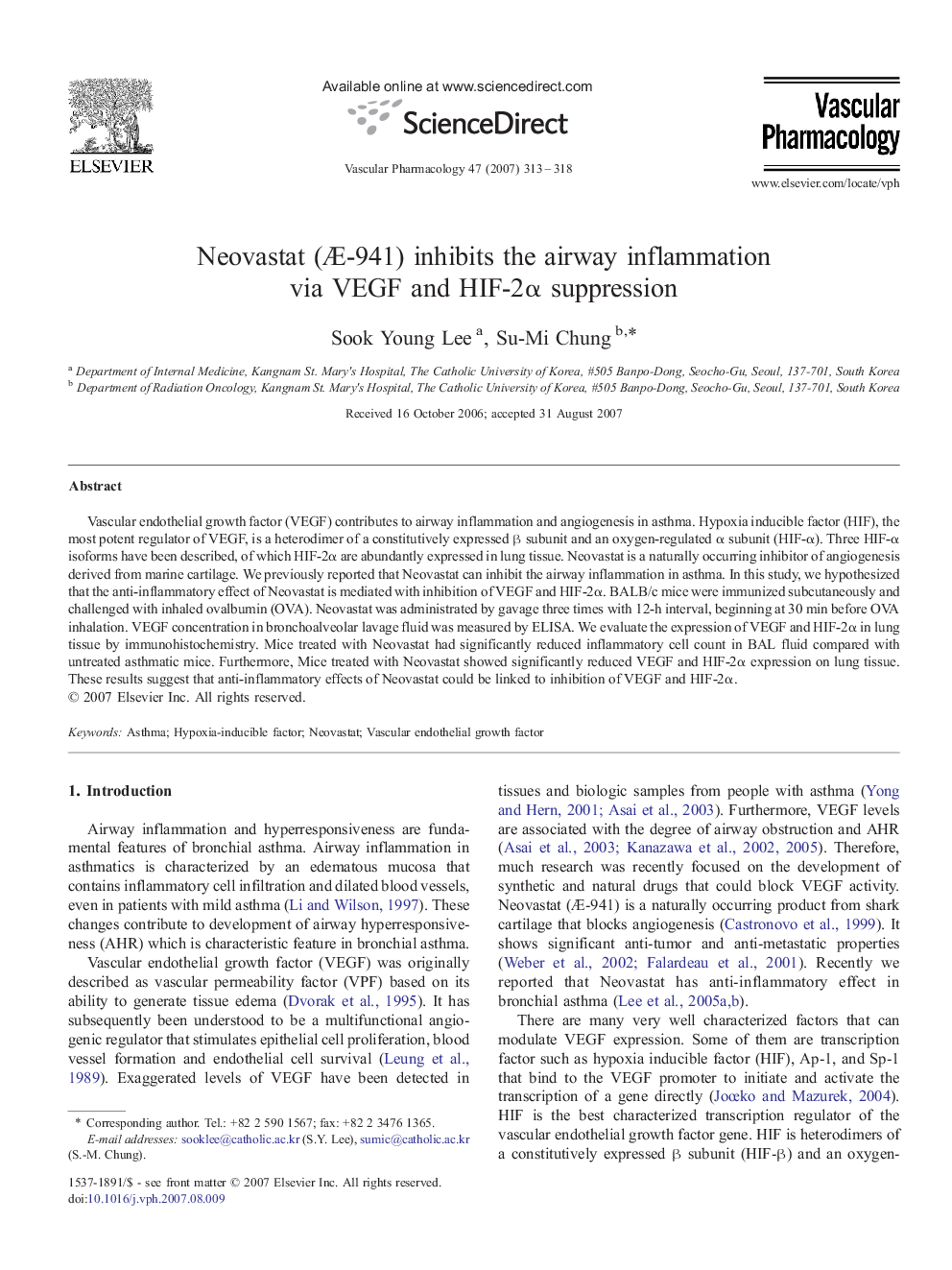| Article ID | Journal | Published Year | Pages | File Type |
|---|---|---|---|---|
| 2574868 | Vascular Pharmacology | 2007 | 6 Pages |
Vascular endothelial growth factor (VEGF) contributes to airway inflammation and angiogenesis in asthma. Hypoxia inducible factor (HIF), the most potent regulator of VEGF, is a heterodimer of a constitutively expressed β subunit and an oxygen-regulated α subunit (HIF-α). Three HIF-α isoforms have been described, of which HIF-2α are abundantly expressed in lung tissue. Neovastat is a naturally occurring inhibitor of angiogenesis derived from marine cartilage. We previously reported that Neovastat can inhibit the airway inflammation in asthma. In this study, we hypothesized that the anti-inflammatory effect of Neovastat is mediated with inhibition of VEGF and HIF-2α. BALB/c mice were immunized subcutaneously and challenged with inhaled ovalbumin (OVA). Neovastat was administrated by gavage three times with 12-h interval, beginning at 30 min before OVA inhalation. VEGF concentration in bronchoalveolar lavage fluid was measured by ELISA. We evaluate the expression of VEGF and HIF-2α in lung tissue by immunohistochemistry. Mice treated with Neovastat had significantly reduced inflammatory cell count in BAL fluid compared with untreated asthmatic mice. Furthermore, Mice treated with Neovastat showed significantly reduced VEGF and HIF-2α expression on lung tissue. These results suggest that anti-inflammatory effects of Neovastat could be linked to inhibition of VEGF and HIF-2α.
